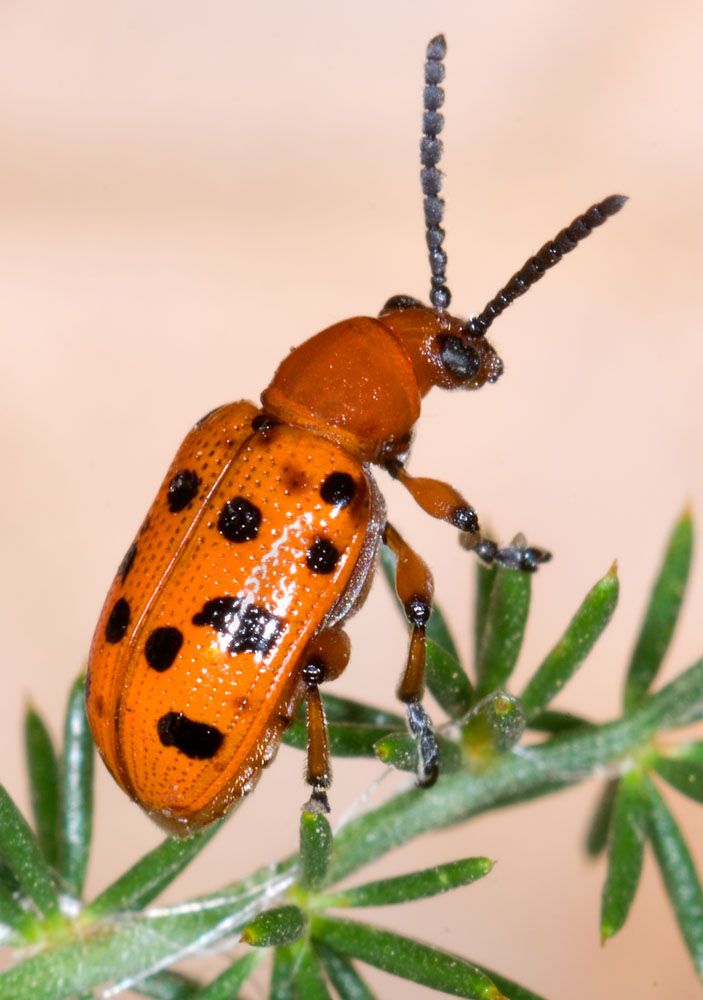
Spotted Asparagus Beetle – Crioceris duodecimpunctata
Spotted Asparagus Beetle – Crioceris duodecimpunctata
Scientific name: Crioceris duodecimpunctata
Common name: Spotted asparagus beetle, shining leaf beetle, 12 spotted asparagus beetle
Appearance: Spotted asparagus beetle has a reddish-orange or tan head and body, while the scutellum is black. It is 5-6.5 mm long and features 6 black spots on each wing. Larval forms of the beetle are plump orange with chewing mouthparts.
Host plants or food: As the name suggests, Spotted asparagus beetle feeds mainly on asparagus. However, it may also feed on members of the Cucurbitaceae species.
Territory: Throughout Europe and North America
Mode of damage: Adult Spotted asparagus beetles are leaf chewers and damage the leaves and shoots. The larvae feed mainly on asparagus berries.
Habits and life history
Spotted asparagus beetles overwinter in the debris and lay eggs on ferns during the Spring.
Most adult beetles are active during the afternoon in peak temperatures.
The larvae feeding on the berries do not produce much damage; however, the adults feeding on the foliage can substantially weaken the plant.
Unlike common asparagus beetles, spotted asparagus lay eggs on the sides rather than on the ends of ferns.
The larvae emerge from the eggs in late June and feed on asparagus berries. They also pupate inside the berries and emerge as adults from the berries.
Spotted asparagus beetles commonly produce 2 to 3 generations per year.
